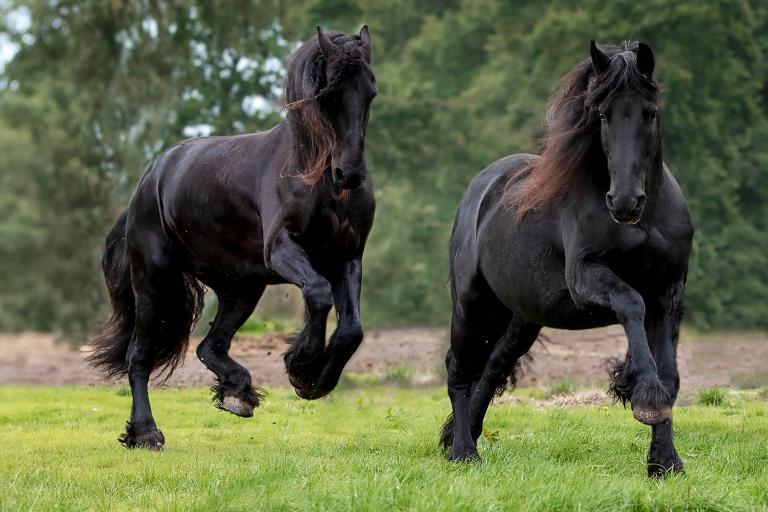Friesian
The Friesian horse is a breed originating from the Dutch province of Friesland. It belongs to the baroque horse types and is characterized by a strong build, black coat color, abundant long hair, and expressive movements. Friesians are good-natured, intelligent, and primarily used in classical dressage, shows, and as carriage horses. In the 19th century, the Friesian population experienced a dramatic decline, but was stabilized through targeted pure breeding of the remaining animals.
Profile
Breeding History
The origin of Friesian horses lies in the coastal Dutch province of Friesland. During Roman times, horses lived there that could be classified as Friesian types. These horses were used as work and riding animals. The modern Friesian emerged in the 16th and 17th centuries. When the Spanish occupied the Netherlands, they brought their spirited Iberian horse breeds with them. Through crossbreeding with these horses, the breed known today as the Friesian developed.
Breeding
In the 19th century, the number of Friesian horses declined so severely that by 1913 only three stallions remained. Subsequently, the small population was increased through pure breeding of the remaining stock.
The Friesian studbook was closed in 1879.
Due to the small population, inbreeding has long been an issue with Friesians. Today, the inbreeding coefficient is low, but it is still recorded for every Friesian registered in the studbook.
Exterior (Appearance)
Friesians are particularly striking due to their majestic appearance. Their build is strong, compact, and rectangular, with a broad, muscular back, wide chest, powerful neck, and strong hindquarters.
Friesians are known for their deep black coat. In breeding, only black horses are desired, although some shading can occur. Markings are undesirable in breeding goals—only mares are allowed a small star on the forehead.
Friesians are classified into three different shades of black:
- Shiny black
- Winter black
- Matte black
Interior (Temperament)
A Friesian is known for its uncomplicated and calm nature. They are friendly, people-oriented, gentle, and intelligent.
Hereditary Diseases
Due to their breeding history, the inbreeding factor has repeatedly played a role in Friesians, as closely related horses were often mated. For this reason, the inbreeding coefficient is documented for every Friesian.
The most common hereditary diseases in Friesians include:
- Dwarfism
- Hydrocephalus
- Megaesophagus
- Aortic rupture
- Primary gastric rupture

